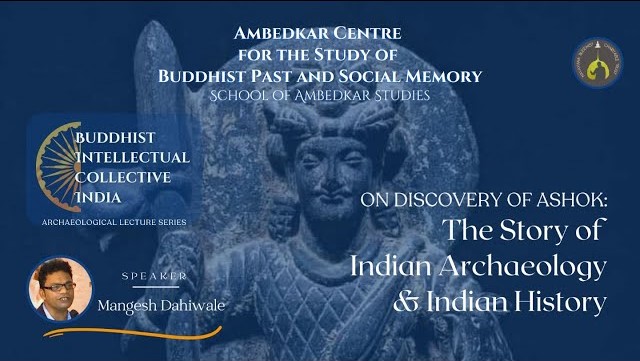Why study Buddhism from the archaelogical perspective: a bull of logic (tarkapungava) in the spider’s web.
The famous Buddhist logician, Dinnaga, was called the bull of logic. His logic destroyed the web of a spider. The web of the spider is the metaphor used by the Vedantins to argue that the param-atma does not diminish by the creation of the atmas just like the spider is not diminished by creating the web. These two metaphors speak for the history of logic in India.
Along similar lines, the presence of (but often neglected and undermined) thousands of Buddhist archaelogical sites in comparision with fewer Brahminical site shows how a major history of India is intentionally misreprsented. Archaelogical studies in India dismantle this illusion with the powerful tools of physical artifacts and material evidence.
Recently, Mangesh Dahiwale (INEB Executive Committe member) presented six lectures on various aspects of Indian archaelogical sites to get a comprehensive picture of the history of Buddhism, particularly with reference to the Indian sub-continent. The following lectures were presented as part of the Buddhist Intellectural Collective India Archeology Lecture Series.
Lecture 1: Buddhist Semiotics: Understanding through Stupas with Mangesh Dahiwale
Lecture 2: Buddhist Symbols: Icons, Signs, Myths, Rituals & Doctrine with Mangesh Dahiwale
Lecture 3: Discovery of Ashoka: The story of Indian Archaeology & History with Mangesh Dahiwale
Lecture 5: The Global History of Buddhist Sites with Mangesh Dahiwale






